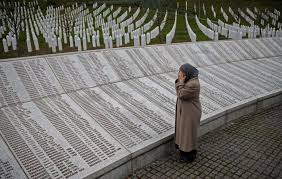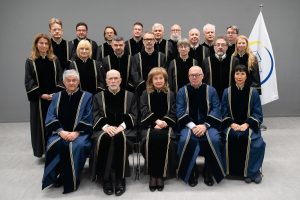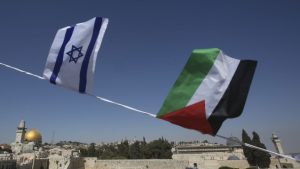
Thirty years after the Srebrenica genocide. The victims’ legal odyssey
Thirty years after the Srebrenica genocide. The victims’ legal odyssey Written for the componente: Armed conflicts Thirty years after
Written for the component:
Peacebuilding and Transitions: Colombia
Truth-telling aims to reveal the atrocities committed during an armed conflict, whether international or non-international, to give a voice to the victims and to generate a debate in society on overcoming violence. This can be achieved through various mechanisms, such as the documentation of human rights violations, processes of reconstruction of historical memory, one of the most widely used being truth commissions.
Numerous studies have been published on truth commissions, analyzing their purpose and scope, and evaluating their effectiveness (1). There is a consensus on the importance of victims’ participation in these processes that seek to unveil the violent past, understand the structural causes of violence, the motivations of the actors involved, and propose initiatives for non-repetition. However, participation must be genuine, meaningful and reflect the voices, needs and priorities of the victims.
Since the late 2000s, emphasis has been placed on the essential participation of children and adolescents in transitional justice scenarios; their inclusion seems indisputable in the sphere of policies to construct historical narratives of truth, but in practice, their effective implementation still has a long way to go.
A change of narrative for a legitimate truth
It is worth asking whose truth is being sought. It is not enough for adults to interpret the facts of violence that have happened to children and adolescents; clarifying the truth requires an honest exercise of sharing the power and the space to narrate with them. It requires listening and understanding in a different way, rethinking the relationship that children and adolescents have had with the war and the way in which their account of what happened to them is constructed. A legitimate truth requires a change of narrative.
The vast majority of research has limited itself to listing the impacts or consequences that children and adolescents have suffered in the war, but has not questioned the reasons for their place in it. To this end, it is essential to understand that there are asymmetrical power relations between adults and children and adolescents (what is called adultcentrism which, in other words, is a system of classification and hierarchization, similar to colonialism, racism and patriarchy), and that these asymmetrical relations, which have manifested themselves through violence, have been accentuated during the armed conflict and have facilitated its persistence (2).
It is from this context that the analysis of the place of children and adolescents in armed conflicts must be made. It is necessary to find explanations as to who benefited from their participation both in and out of the confrontations, and to delve into how adult-centered cultural practices, which have made violence and its persistence possible, are uninstalled in order to make possible a society that guarantees their rights.
Attention must also be drawn to their life stories and experiences, which have been reduced to a single facet: that of victims without agency. Clearly, children and adolescents have suffered violence in a profound way, its consequences have been devastating and will have repercussions throughout their lives, but to see them as a homogeneous group characterized only by what they have suffered (or to believe that they have all suffered in the same way) is to ignore the different nuances of their realities, their agency, their coping mechanisms and their resistance.
In order to build a historical account of what happened to several generations of children and adolescents in the armed conflict, it is urgent to generate family, community and school environments that enable dialogue for the recognition of the truth. Spaces where they can share their feelings and experiences without fear of being judged, and where their stories are made visible and recognized. Safe and trusting environments are needed, where they can express themselves with the purpose of contributing to the strengthening of the social fabric as a scenario of protection. In short, participation is a right that is learned by exercising it.
As an example, we can mention the National Consultation of Children, Adolescents and Youth for the Truth, co-constructed and co-conducted by the Truth Commission of Colombia and a group of young leaders, with the support of numerous institutions and organizations, whose purpose was to know the opinions and reflections of children, adolescents and youth about how much they knew about the armed conflict, the value of truth and their role in the construction of truth, coexistence and non-repetition. With a total of 5,242 participants from 29 departments and 441 municipalities in Colombia, the Consultation became a genuine and autonomous participation exercise in which children, adolescents and young people had a voice and a vote, a milestone in participatory processes, in truth-building scenarios (3).
Counteracting silence
War is accompanied by silences. Silence may be related to the inability to assimilate the violence and to name it; to an intentional silencing to intimidate the victims so that they do not speak about the crimes; and to the silence of institutions and society that should have reacted to the damage caused by the armed conflict and have not done so.
Constructing the truth about the war in Colombia has implied counteracting the silence about what has happened to several generations of children and adolescents in the country. Resignifying the truth implies opening the possibility of new memories and expressing the inexpressible. It is about making the silence audible and inscribing it in history. The truth of children and adolescents, and of those who were so throughout the armed conflict, demands to be heard; it is an ethical, political and legal appeal..
This is why the Final Agreement for the Termination of the Conflict (Final Agreement, point 5.1.1.1.para. 7) stipulated in the mandate of the Commission for the Clarification of the Truth that the work of clarifying what happened should offer “a broad explanation of the complexity of the conflict, in such a way as to promote a shared understanding in society, especially of the less known aspects of the conflict, such as the impact of the conflict on children and adolescents and gender-based violence, among others”. In this sense, it can be affirmed that the mainstreaming of the children and youth approach in the fulfillment of the four mission objectives of the Truth Commission was a significant and valuable bet for the country and for the consolidation of international standards in the effective participation of children and adolescents in transitional justice scenarios.
Democratizing the truth
In general, the main challenge to democratize the truth is for State institutions, social organizations, cooperation agencies, families and other actors in society to be aware of its importance. This implies genuine, autonomous participation processes, where children and adolescents have the agency to tell their truth and build collectively, based on their plural truths, from ethnic, cultural and territorial diversity.
Of course, the construction of truth is long term. The Colombian Truth Commission did not pretend during its mandate to build a narrative about the whole truth of an armed confrontation of such a long duration and great complexity. Therefore, it will be through continuous and consistent processes, and with the effort of the whole society, that the dimension of the experiences of children and adolescents in the war will be truly understood. The country needs to know and assume its responsibility for these events and commit itself to non-repetition.
Children and adolescents are political subjects and rights holders, which means that they should have a fundamental role in the construction of policies for prevention, protection from violence and peace building. Recognizing the truth of their experiences in the armed conflict is the first step, involving them in the construction, implementation and evaluation of public policies in this area is an obligation and an imperative need to guarantee their rights.
Sinthya Rubio Escolar
Internationalist, PhD in Human Rights, with eighteen years of professional and academic experience, national and international, in human rights, transitional justice, peacebuilding and differential approaches.
1 Mark Freeman, Truth Commissions and Procedural Fairness, Cambridge University Press, 2006; Priscilla Hayner, Unspeakable Truths: The Challenge of Truth Commissions, trans. by Jesús Cuellar, Fondo de Cultura Económica, 2008; Tricia D. Olsen, Leigh A. Payne, Andrew G. Reiter, Eric Wiebelhaus-Brahm, When Truth Commissions Improve Human Rights, International Journal of Transitional Justice, 2010; Peter Malcontent, Facing the Past. Amending Historical Injustices Through Instruments of Transitional Justice, 2016.
2 Life Course and Disability Approach, First Research Report, Commission for the Clarification of Truth, Coexistence and Non-Repetition, Colombia, 2020. Working paper.
3 See in https://web.comisiondelaverdad.co/actualidad/n oticias/comision-verdad-lanza-consulta-nacional-ninos-ninas-jovenes-por-verdad https://www.comisiondelaverdad.co/cons ulta-nacional-de-ninos-ninas-y-jovenes-por-la-verdad https://wayback.archive-it.org/22039/20231019114717/https://web.comision delaverdad.co/actualidad/noticias/resultados-consulta-nacional-jovenes-por-la-verdad

Thirty years after the Srebrenica genocide. The victims’ legal odyssey Written for the componente: Armed conflicts Thirty years after

The necessity of public and governmental support for transnational justice: the case of the Kosovo Specialist Chambers Written for the

Syria’s Transitional Government and International Law Written for the component: Peace Building and transitions Syria’s Transitional Government and International

An Unlawful Occupation of a Devastated Territory Written for the component:Armed Conflicts: Gaza “The dialogue of the occupying power

From Chaos to Clarity: How Conflict Classification Enhances Peacebuilding Written for the component: Peace Building and Transitions Introduction In today’s

Last Three Years Without serious consequence: Overview of the nature and Challenges of Russia’s War Against Ukraine under The International


To receive more information about our newsletter, please leave us your email address.